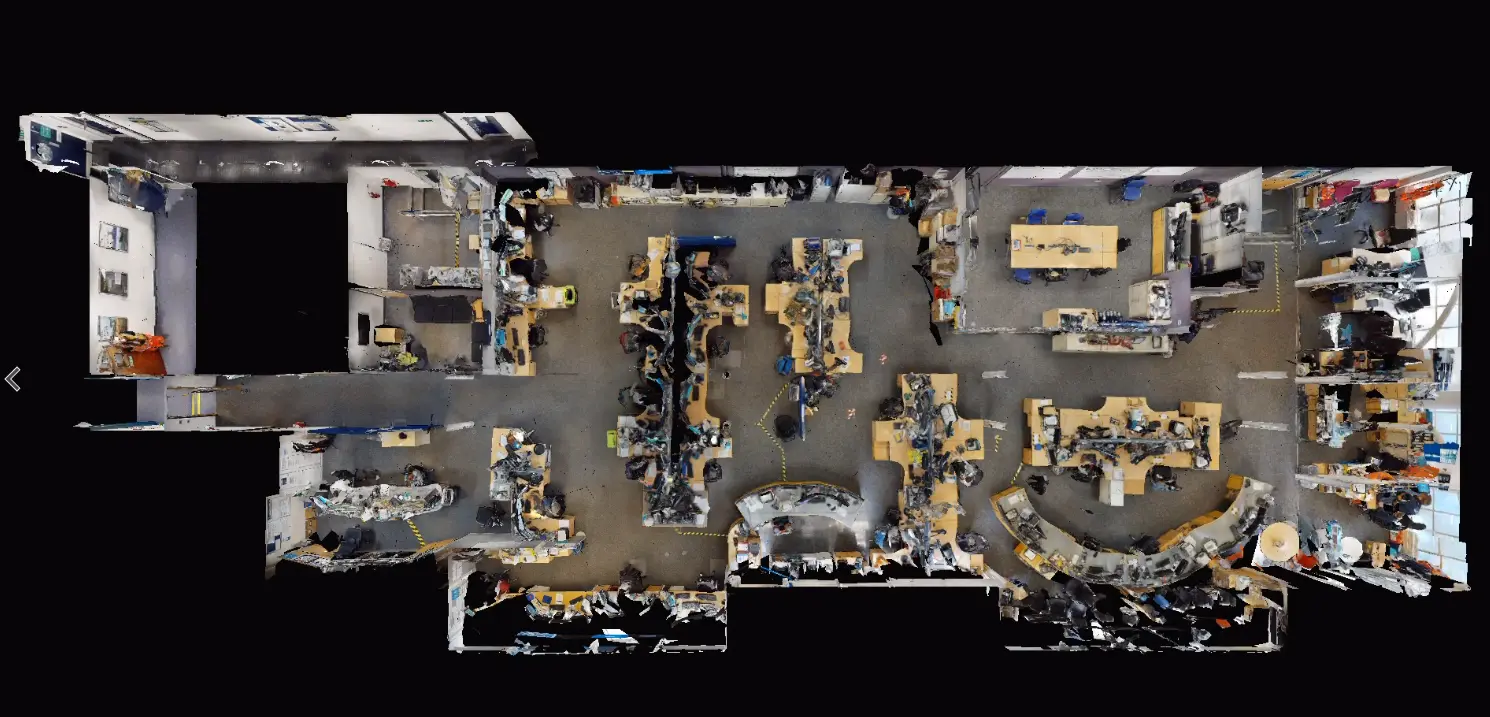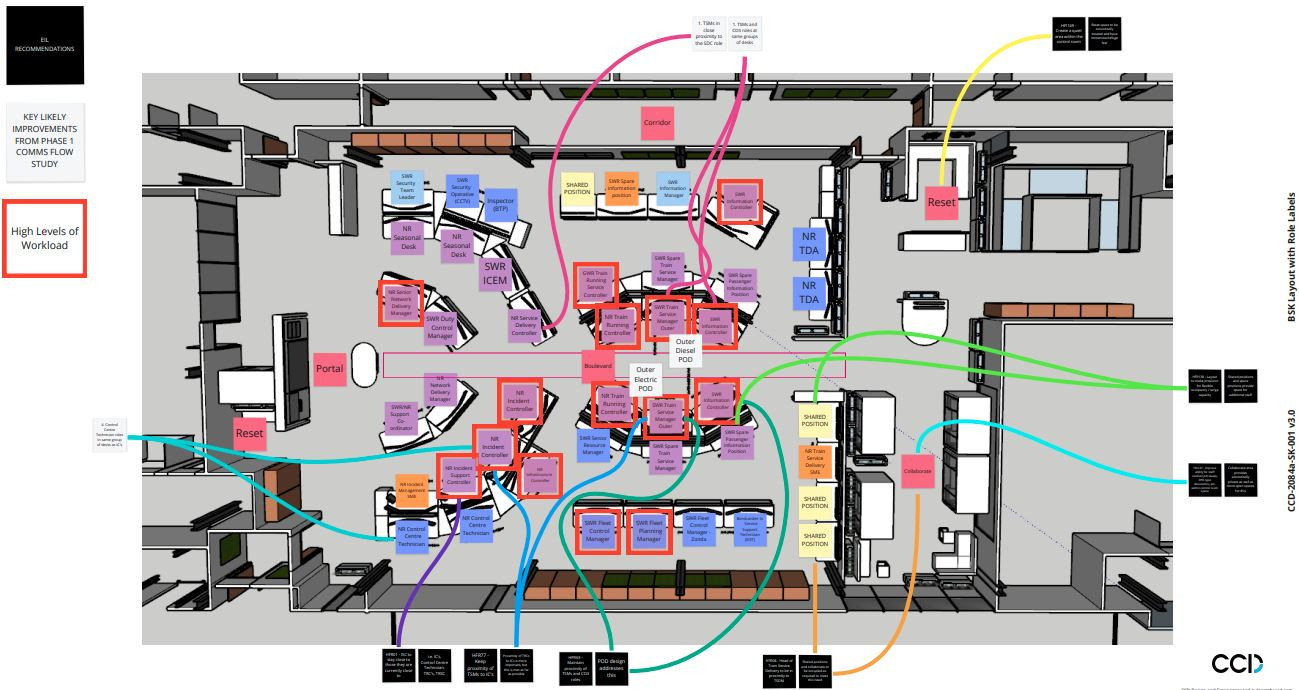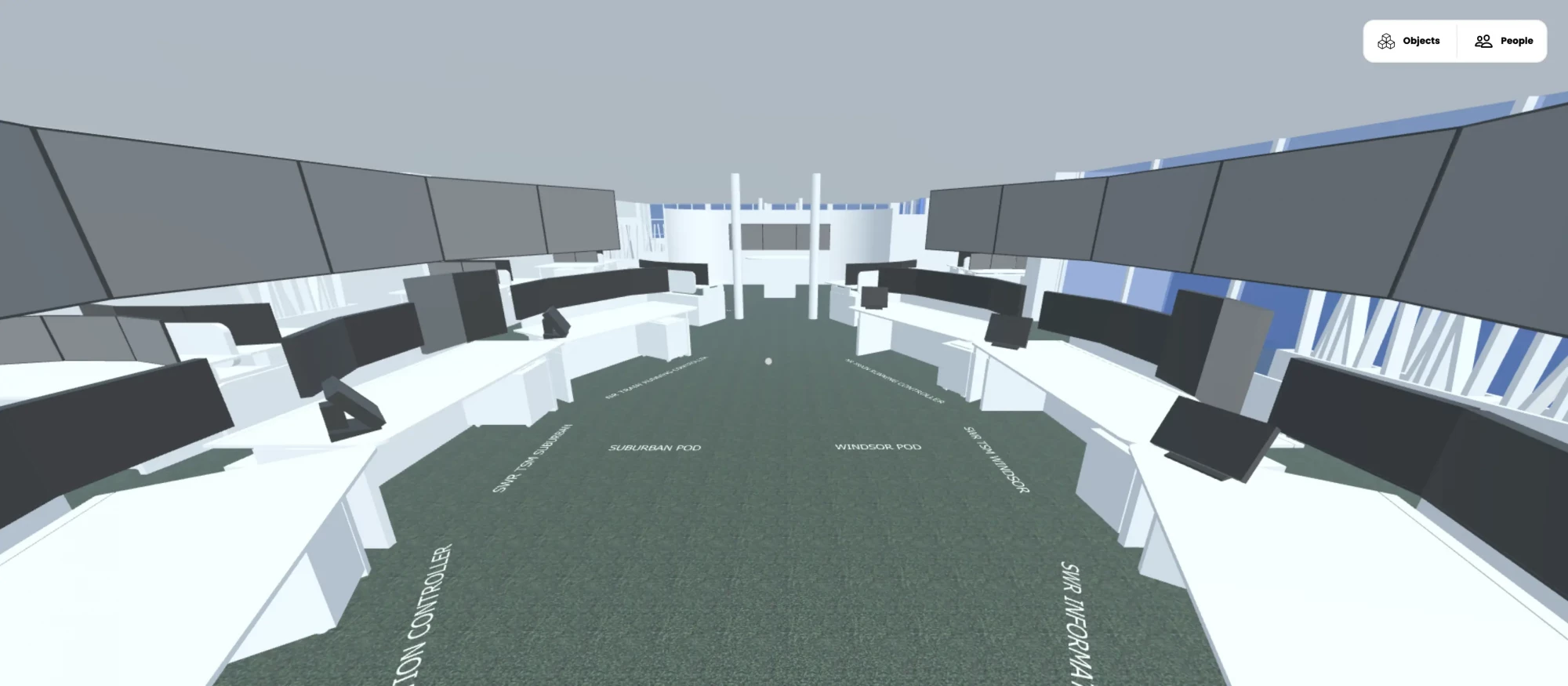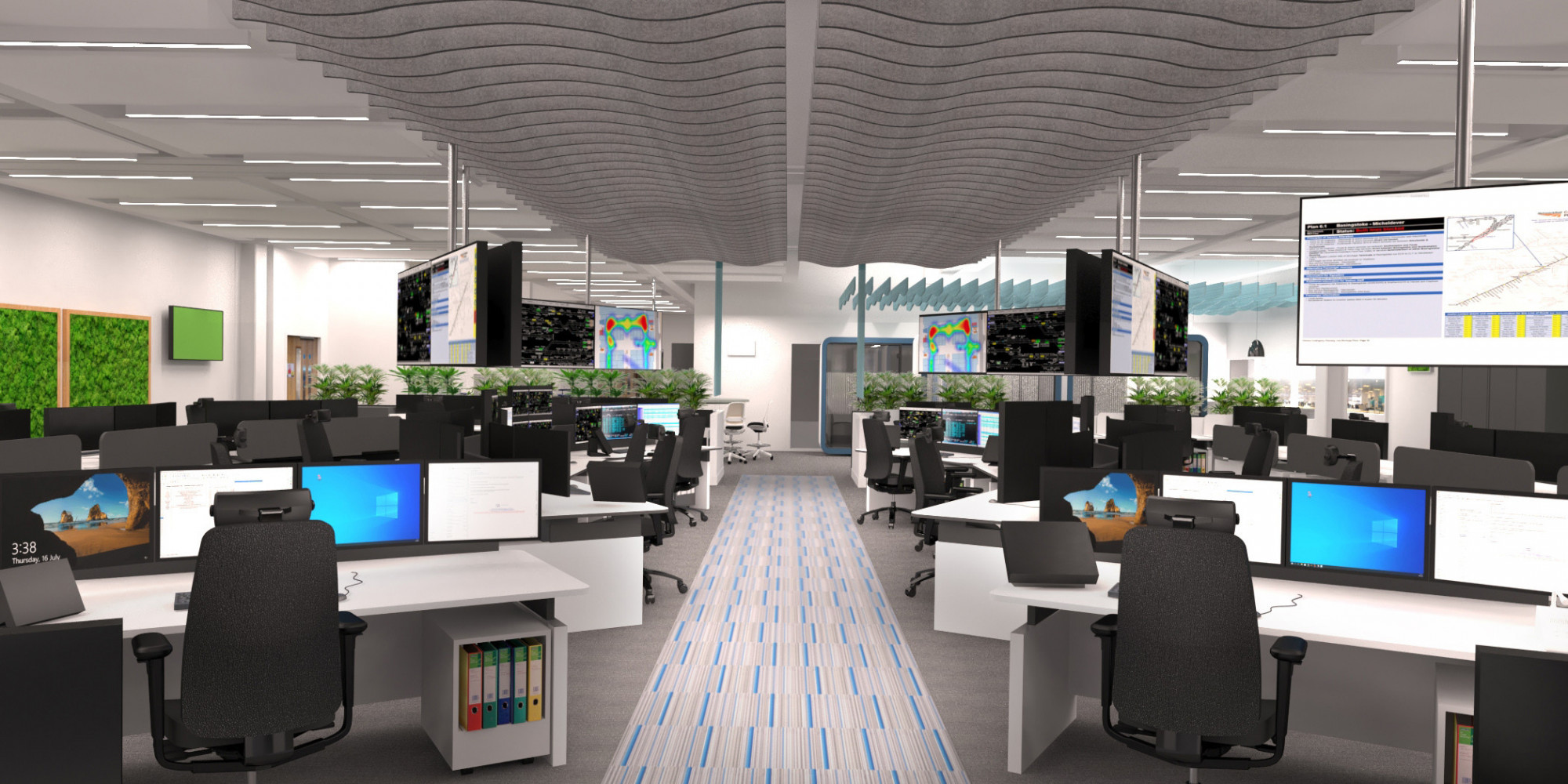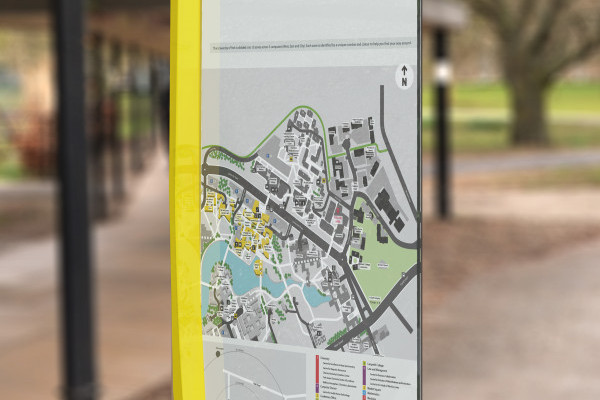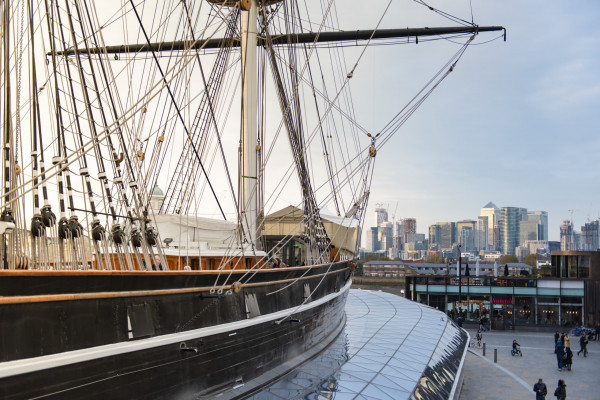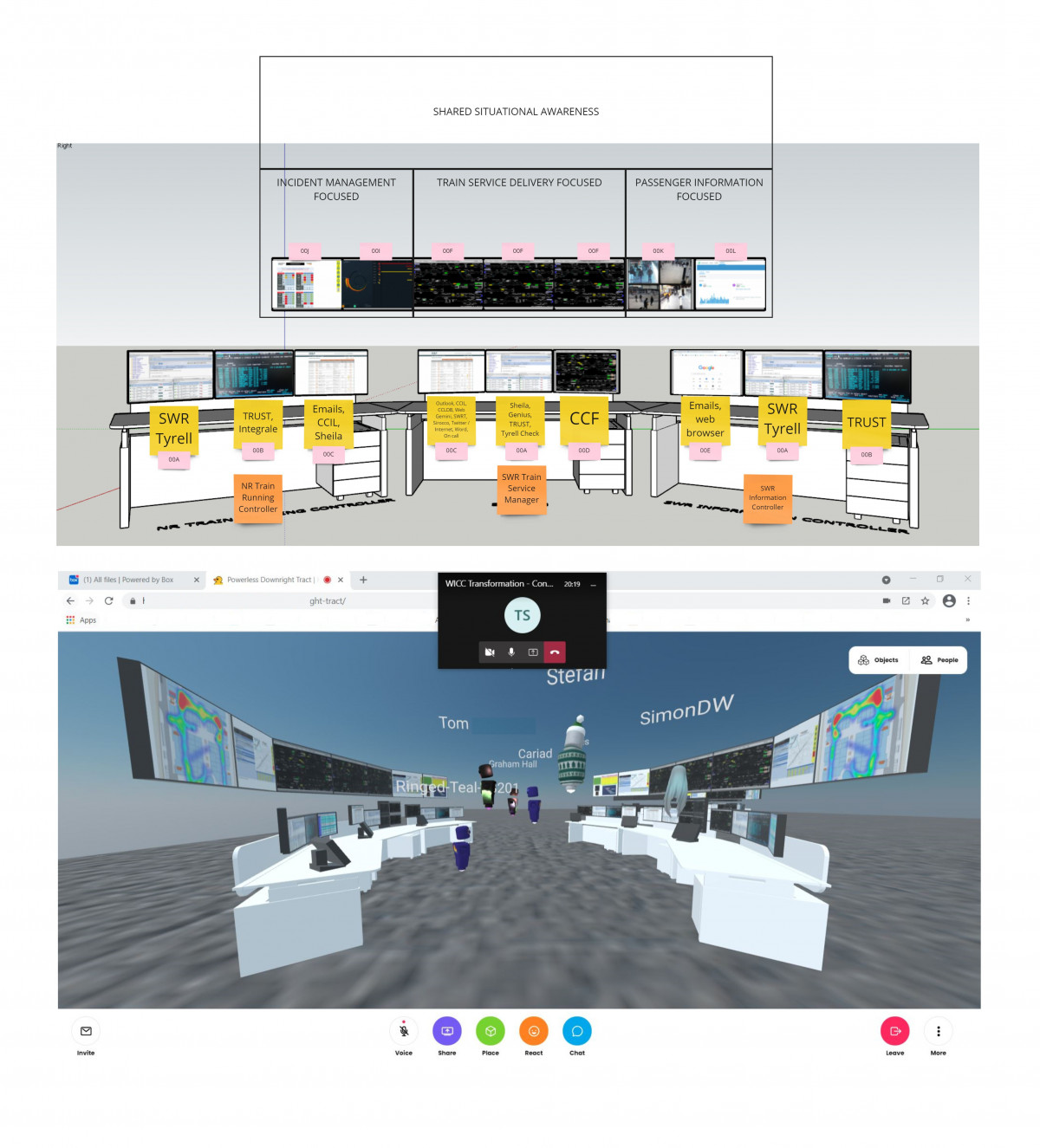
Network Rail & South Western Railway
Using technology to revolutionise how two control centres can deliver a single operation
What is really impressive is the level of immersive detail that Mima bring to the project and joint involvement with project team members and colleagues involved in the project.
Mima led a human-centred design process to transform how two control centres that are 40 miles apart - in Basingstoke and at London Waterloo - operate together to deliver a single operation on behalf of Network Rail and South Western Railway. The ambition was to enable a future-focused operation with bold ambitions for performance in the rail sector.
We designed and delivered a range of collaborative design tools and methods based on innovative use of technology, that initially adapted to the remote working constraints of the COVID-19 pandemic and then migrated to face-to-face workshops when restrictions allowed them.
Using these tools and methods we facilitated a broad-ranging review of the business and redesigned of ways of working, systems, people and processes, while embracing new immersive technology and 3D spatial programs.
Our work covering organisational change included unpacking the existing Management Operating System, elements of the RACI (Responsibility Assignment Matrix) and other operating procedures.
Our Task
Mima led a human-centred design process to transform how two control centres that are 40 miles apart, operate together to deliver a single operation on behalf of Network Rail and South Western Railway.
The ambition was to enable a future-focused operation with bold ambitions for performance in the rail sector.
It's been fantastic to have worked with Mima, who understand control centres, understand ergonomics, understand the design and have ably led the process of combining industry knowledge with their knowledge and ability to design great control centres, to produce what we hope will be an industry-leading facility here in the Wessex Route.
Our Solution
Mima initially facilitated a human-centred review of proposed desk moves at Basingstoke during the preliminary phase that involved user engagement to appraise likely key operational gains from changing workflows as a result of the proposed moves.
The review confirmed that gains were likely but also that adaptations would be needed, in time, to address the inevitable challenges that would be faced when operating across any dual-site facility.
We facilitated a senior management workshop to open up conversations about what could be achieved through a broader passenger-focused communication lens.
We then co-developed a range of parallel workstreams with NR and SWR that would form the basis of a control transformation project with a firm focus on co-design between Mima, NR and SWR. Mima kick-started the control transformation work by carrying out detailed research through interviews with user representatives to understand job roles, needs and aspirations for the new control operation.
Our design-led approach involved co-creating with multiple stakeholders through parallel workstreams alongside a blend of skills across human factors, service, operational, organisational, immersive and interior design
To encourage ongoing engagement across the remote sessions, we utilised web-based collaborative software, including 3D scans of the rooms and immersive VR models, allowing teams to feel connected and for each individual to be heard. We facilitated a BETA testing module to review and develop concepts rapidly to early prototypes and build buy-in to proposed new ways of working and design features. The workstream that focused on physical design, wove concepts and insights from the earlier interviews and workstreams into the functionality of the two control rooms.
Results
As a result of our human-centred design approach, the WICC transformation project ensured that a wide range of aspects from the existing operation were reviewed and considered prior to design interventions being co-designed and key decisions made. This included an extensive set of 1-2-1 sessions with users of the control rooms and a rethink of the operational systems that included the redesign of the RACI - layering a set of active verbs to encourage proactive and communicative ways of working.
Building on the organisational change interventions, Mima also collaborated with the WICC team to explore how other aspects of the design could reinforce the culture and ways of working that the team want to instil.
Some ideas included designing zones and areas for collaboration away from desks, creating space and facilities for re-energizing staff mid-shift, especially when dealing with difficult operational scenarios, and demonstrating that the organisation values the contribution made by each member of staff. Through the course of the work, the innovative use of technology in this context for the rail sector opened up thinking and connected ideas and conversations between colleagues across the organisation. This meant that the co-creative process encouraged sets of colleagues and teams to share thinking with one another in ways that they had not previously done.
- The outcomes of the work led by Mima included the following:
- New multimodal Concept Operating Model (COM)
- Significantly improved ability for the two control rooms to act together as a single operation
- A new system operating model – multi-modal framework
- New ways of working and sharing knowledge and skills
- New concepts for shared situational awareness
- New technology, carefully selected and rigorously reviewed to ISO standards
- Physical design that delivers transformation and emphasises the human-centred outlook of the wider organisational structure to include the control and communication team
- A future-focused set up that efficiently connected the two control rooms to the front-line operation at stations and on trains, creating an end-to-end delivery framework
